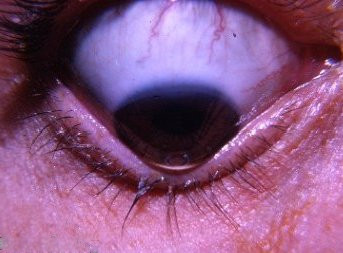Introduction
If your child has an eye exam and the doctor says they have keratoconus, don’t panic. Keratoconus is a condition that can be managed with special contact lenses or surgery. But if left untreated, it could lead to permanent vision loss.
Keratoconus is a condition of the cornea, the transparent covering of the eye.
Keratoconus is a condition of the cornea, the transparent covering of the eye. Keratoconus is a degenerative disease of the cornea that causes irregular astigmatism and visual distortions.
Keratoconus affects approximately 1 in 2,000 people in Australia and New Zealand; it’s most common in young adults aged 15-30 years old but can occur at any age.
Keratoconus is a corneal degeneration that causes irregular astigmatism and visual distortions.
Keratoconus is a condition of the cornea, which is a transparent dome-shaped membrane in your eye that helps focus light onto your retina. The cornea has many layers and is made up of water and proteins called collagen fibers.
When keratoconus develops, these fibers become disorganized, causing the surface of your cornea to become irregularly shaped like a cone or steep mountain peak rather than being flat like it should be. As a result, you may have blurry vision or difficulty seeing at night because light isn’t being focused properly onto your retina (the back part of your eye).
This condition isn’t contagious; it’s usually inherited from parents who have milder forms of this disease themselves but never seek treatment until their child develops symptoms later on in life
The cornea’s collagen fibers are not aligned properly and they become weak, thin, or brittle.
The cornea’s collagen fibers are not aligned properly and they become weak, thin or brittle. This can happen because of genetics, environment and lifestyle factors.
Collagen is a protein that makes up connective tissue in the body. The cornea has many layers of this tissue, including the stroma (outer layer) and endothelium (innermost layer). The stroma contains many fibers called collagen fibrils that provide strength to the cornea so it won’t bulge outward after being hit by an object like sand or dirt during sports activities such as baseball or soccer; this helps maintain its shape even when you blink your eyes closed tightly after getting something in them like dust from working on a car engine outside under bright sunlight
Keratoconus typically begins in late adolescence or young adulthood, although it can occur at any age.
Keratoconus is a progressive disease of the cornea, the clear outer surface of your eye. It does not affect other parts of the eye and usually does not cause problems with vision.
Keratoconus typically begins in late adolescence or young adulthood, although it can occur at any age. It usually affects both eyes symmetrically–that is, if one eye has keratoconus, then the other one will also be affected by this condition.
Keratoconus occurs most frequently in Caucasians of Northern European descent (90 percent).
You’re probably wondering what the hell keratoconus is. It’s a genetic condition that affects the shape of the cornea, or clear part of your eye. In people with keratoconus, this structure becomes more cone-shaped (or “conical”) over time and can result in vision loss if left untreated.
Keratoconus occurs most frequently in Caucasians of Northern European descent (90 percent). However, it can also occur in people of any racial or ethnic background–meaning if you’re not white or don’t come from Europe, you shouldn’t assume that your eyes are safe from this disease!
Symptoms include blurring of vision, sensitivity to light and distortion of vision.
Symptoms include blurring of vision, sensitivity to light and distortion of vision.
Blurred vision can be a symptom of a number of conditions including glaucoma and cataracts. If you notice your child’s eyesight deteriorating or they are having difficulty seeing at night, it may be time for an eye exam.
Sensitivity to light is another common symptom that could indicate an eye problem. Children who have this condition often squint when they are outside in bright sunlight or under fluorescent lights at school or work because they find it hard to see clearly with the extra brightness shining into their eyes.
Distortion or double vision can also occur as part of an eye disease such as strabismus (commonly called crossed eyes). This condition occurs when one eye turns inward toward the nose instead of straight ahead like it should be aligned with its fellow eyeball on both sides so there is no overlapping image between them–this causes confusion for anyone watching them walk around town! Glare from headlights coming up behind us while driving at night time also causes problems since we’re looking directly into those bright lights without any protection from sunglasses/sunglasses etcetera…
More than one million Americans are thought to have keratoconus.
Keratoconus is a condition that affects the cornea, the clear tissue that covers your eye. It causes it to become thin, irregularly shaped and asymmetrical.
The condition affects more than one million Americans. The exact number of people affected globally isn’t known but estimates range between six and 10 million worldwide.
If your child experiences blurred vision without an obvious cause, get them examined for keratoconus as soon as possible
If your child experiences blurred vision without an obvious cause, get them examined for keratoconus as soon as possible. Early diagnosis is important to prevent vision loss and improve their quality of life. Do not ignore symptoms; they could be a sign that something more serious is going on in your child’s eyesight.
Conclusion
The sooner you get your child examined for keratoconus, the better. If it’s diagnosed early, treatment is more likely to be effective and prevent vision loss. The good news is that there are treatments available today that can slow the progression of this condition and even stop it from worsening if they’re used regularly. So if your child experiences blurred vision without an obvious cause, get them examined for keratoconus as soon as possible!
honcus congue. Aliquam luctus, sapien in consectetur cursus, quam urna euismod magna, sed pellentesque massa libero eu lorem. Aenean rhoncus gravida nisl vel pretium. Nam ac nisl non ipsum vestibulum vehicula vulputate sagittis magna. Aenean est nisl, convallis volutpat tempor ac, tempus ac ante. Class aptent taciti sociosqu ad litora torquent per conubia nostra, per inceptos himenaeos. Fusce rhoncus sodales tempor. Nunc pretium tortor felis, eget cursus magna accumsan a.
Etiam eu molestie eros, commodo hendrerit sapien. Maecenas tempus leo ac nisi iaculis porta. Sed sapien tortor, aliquet a velit ut, lacinia molestie velit. Maecenas ornare consequat massa ullamcorper dapibus. Aliquam auctor, sapien sit amet accumsan facilisis, enim enim aliquet arcu, tincidunt pellentesque justo turpis id neque. Duis eleifend nunc sit amet mi dapibus ornare. Suspendisse vel libero sem.
Sed nec blandit nibh. Pellentesque commodo suscipit gravida. Sed sit amet ex sed mi dignissim elementum in ut quam. Vivamus laoreet non mauris eget mattis. Nam turpis orci, consectetur vel accumsan sed, condimentum at sapien. Nunc ut egestas neque, eu hendrerit lacus. Suspendisse fermentum congue dui nec fringilla. Duis volutpat nunc lectus. Suspendisse potenti. Suspendisse egestas venenatis nunc. Donec at laoreet lacus.
Pellentesque habitant morbi tristique senectus et netus et malesuada fames ac turpis egestas. Aliquam quam elit, mollis at odio gravida, ultrices pulvinar justo. Vivamus eleifend mollis dolor, et ornare turpis vehicula in. Pellentesque auctor ac enim sit amet euismod. Ut eu accumsan nunc. Nam ultrices, orci a volutpat molestie, ipsum magna posuere ex, vel lobortis dolor purus tristique purus. Integer arcu libero, feugiat non eros vel, aliquet sodales justo. Aliquam lobortis efficitur velit, vel tempor dui iaculis non. Mauris non ullamcorper leo. Nulla consectetur arcu eget condimentum auctor. Aliquam sagittis dictum augue. Duis fringilla nec augue eu laoreet.



Leave a Reply